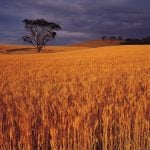
Tag Archives emissions

Denmark will be first to impose CO2 tax on livestock emissions, government says

New York sues meatpacking giant JBS over climate claims
Attorney general calls company's emissions goals 'infeasible'

Atlantic ag emissions dropped slightly since 1990: report
Greenhouse gases from cattle, fuel oil dropped; nitrogen, diesel fuel emissions increased

Danish farmers concerned carbon tax will lead to lower production
Dairy giant says new technology has reduced emissions by 1 million tonnes in two years

First-of-its-kind cattle methane limiter approved for Canada
Enteric methane emissions from cattle contributes 3.3 per cent of Canada’s total GHG emissions

Canada pledges funds for efficient fertilizer research
Joining the Efficient Fertilizer Consortium gives Canada chance to influence research strategies, feds say

Beef marks GHG drop: report
Assessment reveals industry has reduced emissions by 15 per cent

Biden backs ethanol industry on low-emission aviation fuel tax credits
Aviation is seen as one of the few routes to increase ethanol demand amid rising electric vehicle sales

Twice-amended Bill C-234 clears Senate
The bill will return to the House of Commons for further debate

Brazilian state launches mandatory tracking of cattle to stop deforestation
The state government plans to track all 24 million cattle in the Para region by the end of 2026


